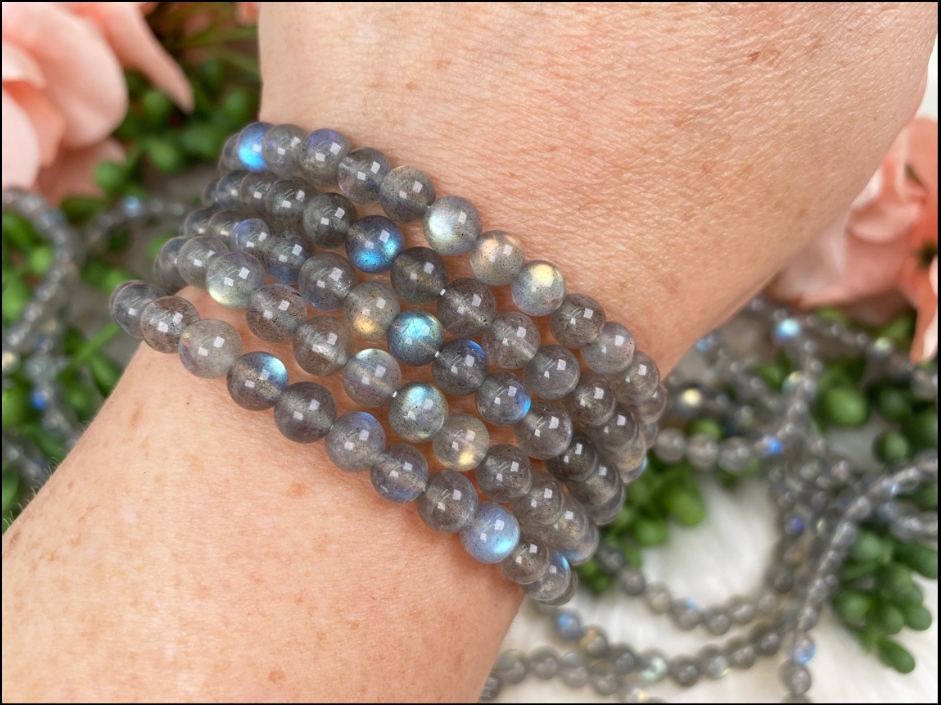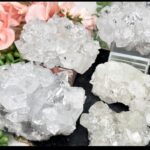Labradorite, a mesmerizing gemstone revered for its iridescent play of colors, has captured the imagination of crystal enthusiasts and jewelry aficionados alike. Originating primarily from the Labrador region in Canada, this unique stone exhibits a captivating range of hues that seem to dance and shimmer as light interacts with its surface. Its formation, characteristics, and versatile uses make Labradorite a fascinating subject of exploration.
Formation and Origins
Labradorite belongs to the feldspar mineral group and is formed through a combination of volcanic and tectonic processes. It is primarily found in igneous rocks such as basalt and gabbro, where it forms as a result of the slow cooling of magma deep within the Earth’s crust. The distinctive iridescence of Labradorite, known as labradorescence, is attributed to the presence of microscopic lamellae or layers within the stone. These layers refract light, creating the characteristic play of colors that Labradorite is famous for.
Appearance and Characteristics
One of the most striking features of Labradorite is its iridescent sheen, which can display a spectrum of colors including blue, green, gold, and orange. This phenomenon, known as labradorescence, sets Labradorite apart from other gemstones and lends it an otherworldly allure. In its natural state, Labradorite often appears as a gray or black stone with flashes of color interspersed throughout its surface. However, when polished and cut into cabochons or faceted gemstones, Labradorite reveals its full spectrum of colors, making it a popular choice for jewelry designers and collectors alike.
Versatile Uses and Applications
Labradorite’s mesmerizing beauty and metaphysical properties make it a versatile gemstone with a wide range of uses. In addition to being used in jewelry, Labradorite is often utilized in various forms of energy work and spiritual practices. Crystal bracelets adorned with Labradorite beads are believed to promote protection, intuition, and spiritual awakening. Similarly, Labradorite palm stones, which are smooth, polished pieces of Labradorite designed to fit comfortably in the palm of the hand, are used in meditation and mindfulness practices to enhance focus, clarity, and inner vision.
Furthermore, Labradorite is frequently employed in crystal gridding, a practice wherein crystals are arranged in specific patterns to amplify their energies and intentions. When used in combination with other stones, Labradorite can enhance the overall effectiveness of the grid, creating a harmonious synergy of energies. Additionally, Labradorite’s stunning appearance makes it a popular choice for home decor, whether displayed as a standalone piece or incorporated into decorative items such as bookends, candle holders, or figurines.
Appreciating Labradorite’s Beauty and Energy
Beyond its practical applications, Labradorite invites us to appreciate the beauty and magic of the natural world. Whether gazing upon a shimmering Labradorite pendant, meditating with a Labradorite palm stone, or simply admiring its iridescent hues in a decorative display, Labradorite reminds us of the inherent wonder and mystery of the Earth’s geological treasures. As we connect with Labradorite’s energy, we are invited to delve deeper into our own inner landscapes, tapping into our intuition, creativity, and spiritual potential.
In conclusion, Labradorite stands as a testament to the beauty and complexity of the natural world. From its origins deep within the Earth to its multifaceted appearance and versatile uses, Labradorite continues to captivate and inspire generations of enthusiasts and seekers. Whether worn as jewelry, used in meditation, or enjoyed as a decorative accent, Labradorite serves as a reminder of the profound connections between humanity and the natural world, inviting us to explore, appreciate, and celebrate the wonders that surround us.




